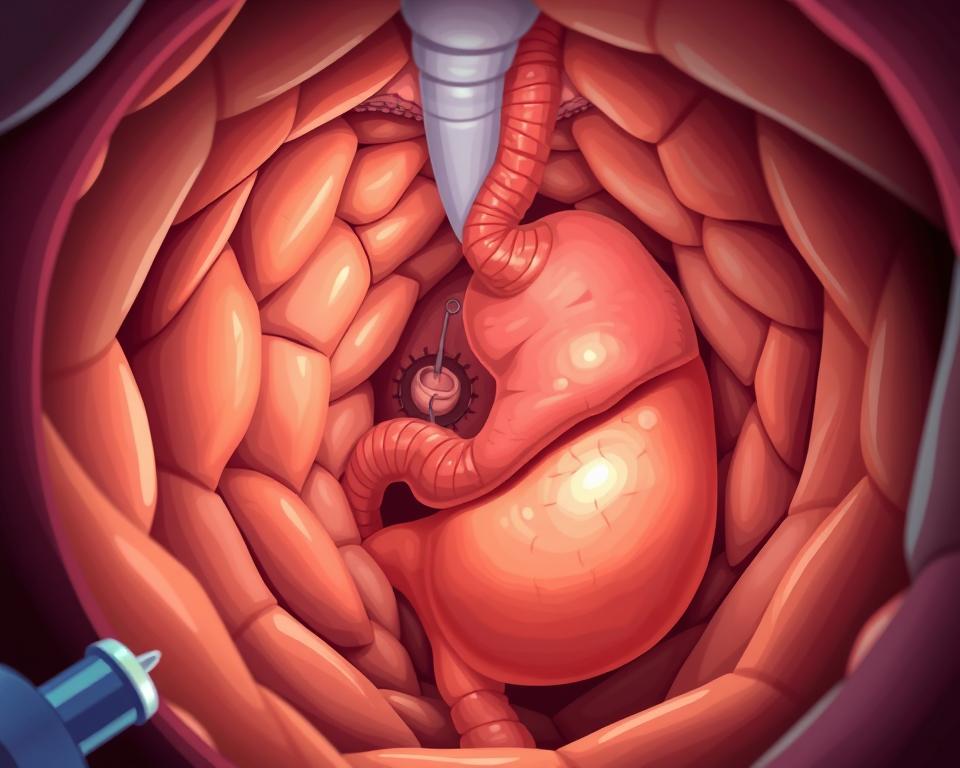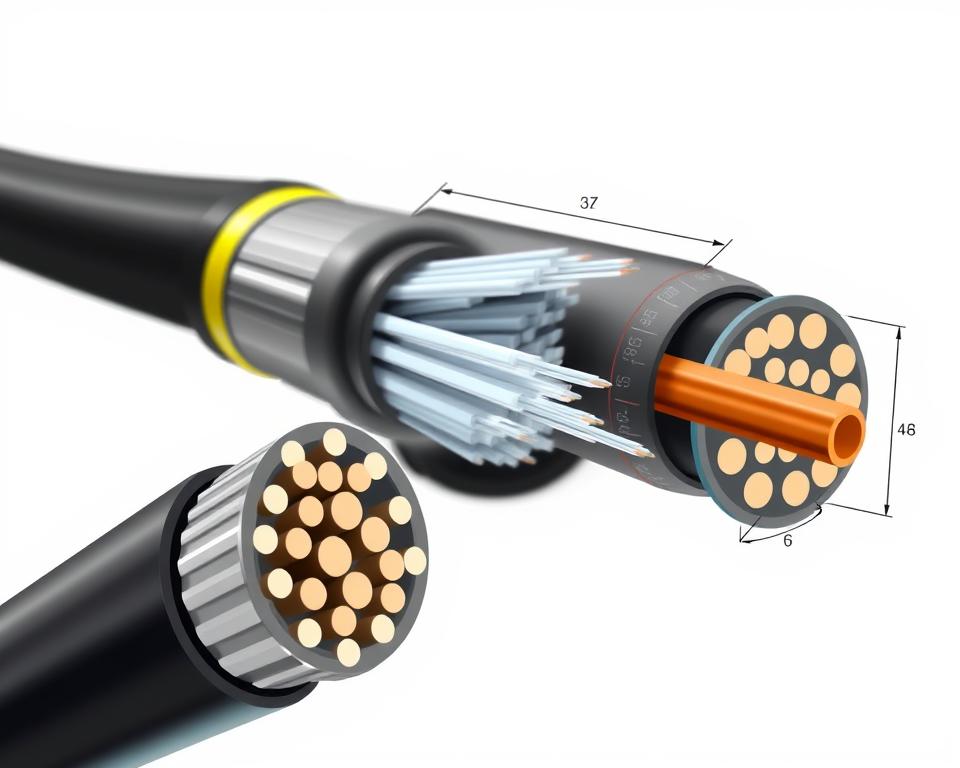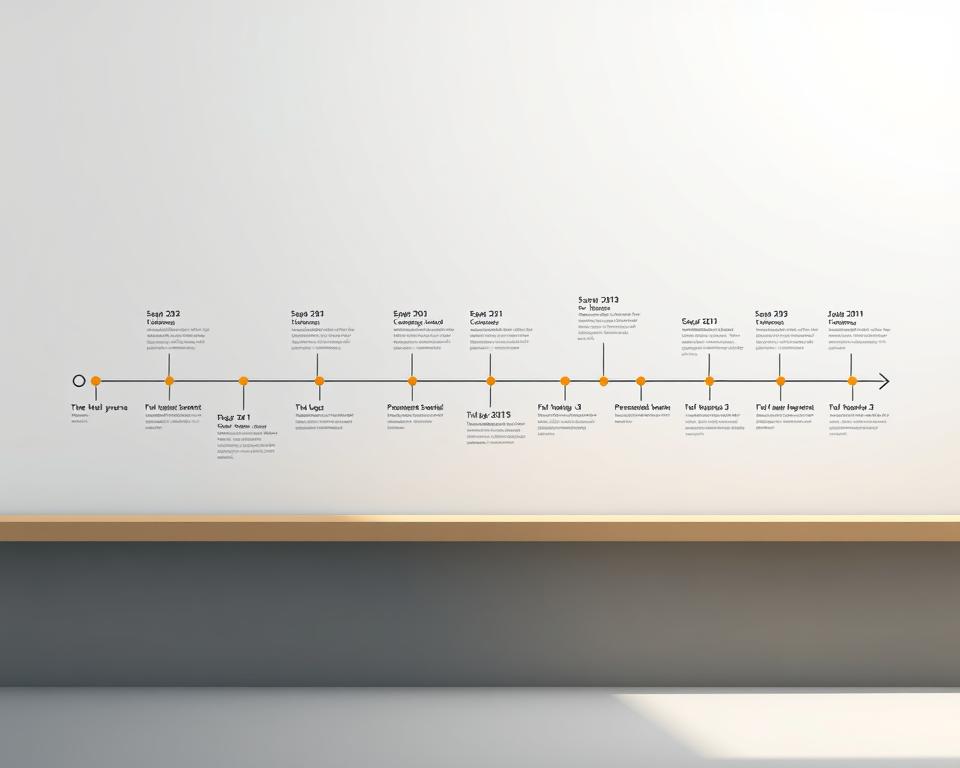Endoscopy in Singapore by AMT: Advanced Care.
Today, more than 40% of advanced endoscopic devices across Southeast Asia incorporate precision components produced via Metal Injection Molding (MIM). This improves safety and speeds up procedures throughout the region.
Here’s how AMT in Singapore leads endoscopy with a blend of clinical expertise and high-tech manufacturing. Their approach combines MIM, 100K cleanroom assembly, and ETO sterilization. This enables single-use devices and sterile, peel-open packaging for AMT’s endoscopy.
In Singapore, endoscopy centers are seeing big benefits. They have better imaging, tinier optics, and top-notch training. For patients, this means less invasive tests and treatments, shorter sedation, and quicker healing.
AMT’s contributions also address broader challenges such as cost pressures, specialist availability, and regulatory compliance region-wide. This article outlines how AMT’s endoscopy capabilities support clinicians and patients alike. It focuses on better access, safety, and saving money.
Fundamental Insights
- Endoscopy by AMT combines MIM manufacturing with cleanroom assembly and ETO sterilization for reliable components.
- AMT endoscopy supports high-definition, minimally invasive procedures that improve patient recovery.
- Singapore centers use AMT components to strengthen workflows and device safety.
- Advanced systems reduce sedation needs and enable combined diagnostic/therapeutic sessions.
- Access is shaped by cost, specialist training, and regulatory requirements across the region.
What is endoscopy and how AMT contributes to modern endoscopic procedures
Endoscopy is a way doctors can look inside the body without big cuts. It uses small cameras on flexible or rigid scopes. This approach enables visualization, diagnosis, and treatment in a single session. Recovery time is shorter and open surgery is often avoided.

Endoscopy: Definition & Purpose
Endoscopy evaluates regions such as the GI tract, airways, and urinary system. Biopsies, polyp removal, and targeted therapy can occur with minimal incisions. This means patients don’t need heavy sedation, can leave the hospital sooner, and get back to life quicker.
AMT’s role in advancing endoscopic procedures through technology and manufacturing
AMT manufactures precision parts that enhance endoscope performance. Using MIM and cleanroom assembly meets stringent standards. Components such as biopsy tools and electrodes arrive sterile and ready to use. This makes things faster and safer for patients.
Evolution from early scopes to today’s high-definition, miniaturized endoscopes
Early endoscopes of the 19th century were basic tubular devices. Now, we have tiny digital cameras and flexible scopes. Enhanced imaging and lighting improve visualization and diagnosis. Early AI even helps spot problems faster.
With suppliers like AMT, these tools keep improving. Clinicians in Singapore perform more complex therapy with reduced risk. Patients receive high-quality care without extensive surgery.
endoscopy by AMT
AMT is your all-in-one partner for those making devices and hospitals in Singapore. They combine precision manufacturing, cleanroom assembly, and sterilization to deliver use-ready tools aligned to clinical timelines. This method speeds up device development from quick prototyping to full-scale production, all while focusing on regulatory requirements.
Overview of AMT endoscopy solutions and services
AMT’s endoscopy solutions include Metal Injection Molding (MIM), finding precision components, assembly in a 100K cleanroom, and ETO sterilization. They support single-use devices, peel-open sterile packaging, and post-manufacturing sterilization so instruments can go straight to the OR. This results in shorter waiting times for manufacturers and gives doctors sterile, ready-to-use tools right away.
How AMT integrates manufacturing (MIM) and device design
MIM creates complex geometries and micro-features that are hard to achieve otherwise. AMT combines MIM with design focused on manufacturing to cut down on the number of parts by merging several into one. Results include tight precision at micro-scales, improved reliability, and reduced assembly time.
AMT Component Examples for Endoscopy
AMT supplies biopsy forceps and graspers for GI/urology, clamps and scissors for delicate handling, and precision biopsy needles. They also provide single-use TURP bipolar electrodes (stainless/tungsten) in sterile, peel-open packs. Each item is made with consistent quality and assembled in clean conditions to ensure they’re safe for clinical use.
| Component | Manufacturing Method | Typical Materials | Clinical Use |
|---|---|---|---|
| Biopsy forceps | MIM plus secondary finishing | Stainless steel 316L | Targeted tissue sampling (GI, urology) |
| Graspers | Precision MIM | Stainless & tungsten alloys | Tissue handling and retrieval |
| TURP bipolar electrodes | MIM plus post-machining | Tungsten alloy, stainless steel | Bipolar resection (urology) |
| Clamps and micro-scissors | MIM + micro-machining | Medical-grade stainless | MI instrument tips |
| Precision biopsy needles | MIM + heat treatment | Medical stainless steel | Targeted tissue extraction with precise geometry |
AMT’s solutions reduce assembly steps and increase batch consistency. Clinicians receive sterile, packaged, ready-for-surgery devices. Manufacturers achieve efficient, cost-effective scaling.
Singapore’s Advanced Endoscopy
Singapore is known for its wide range of advanced endoscopy methods. These cover both diagnostic and therapeutic needs. Leading hospitals and centers have endoscopy suites. They use the newest tools for both simple and complex conditions.
GI Endoscopy: Diagnostic & Therapeutic
GI endoscopy includes EGD and colonoscopy. They offer direct viewing, targeted biopsy, polypectomy, and control of bleeding in one session. Techniques like endoscopic mucosal resection and submucosal dissection can treat early cancers. And they do this without the need for open surgery.
MI Endoscopy and Recovery
Minimally invasive endoscopy uses flexible scopes, tiny cameras, and tools for treatment. These advances limit tissue trauma and reduce sedation. Thus, patients usually have shorter hospital stays. Patients resume normal activities sooner and face fewer complications than with open surgery.
Combined Diagnostic/Therapeutic Procedures
Many endoscopic procedures offer both diagnosis and treatment in a single session. Physicians can identify and remove polyps, biopsy tissue, and perform coagulation/resection simultaneously. This reduces repeat anesthesia, shortens hospital time, and enables outpatient/day-surgery care.
AMT-enabled tools and precision parts enhance advanced endoscopy in Singapore. Innovations support higher accuracy and safer complex procedures. Consequently, regional patients access more up-to-date care.
Endoscopy technology and instrumentation from AMT
AMT provides practical, clinical-grade advancements for endoscopy. They bring together optics, precise metals, and disposable items. This helps clinicians see more clearly and work more safely.
Imaging and Illumination Advances
Surgeons receive crisp, real-time imagery via HD and mini cameras. Bright LEDs and fiberoptic lights boost color and detail. This helps spot issues faster, making surgeries shorter and safer.
MIM’s Role in Precision Components
MIM enables precise metal components for endoscopy. Biopsy forceps, grasper jaws, and electrode tips are made durable and fit well. This method makes the parts reliable by reducing assembly steps.
Single-use instruments and sterile packaging practices for safety
Single-use tools arrive sterile to lower infection risk. ETO sterilization and clean assembly underpin safety. Sterile-barrier packaging and lot traceability secure workflows.
| Feature | Clinical Benefit | AMT capability |
|---|---|---|
| HD imaging | Improved lesion detection and treatment precision | Integrated CMOS + LED/fiber lighting |
| MIM precision parts | High precision, strength, and part consolidation | Metal Injection Molding for forceps, electrodes, micro-instruments |
| Sterile single-use instruments | Lower infection risk, simpler reprocessing | Sterile-peel packs, ETO sterilization, cleanroom assembly |
| Traceability and packaging | Compliance and supply confidence | Lot tracking, sterile barriers, validated processes |
AMT’s endoscopy solutions bring together imaging, MIM parts, and single-use tools for modern needs. They focus on accuracy, reliability, and safety in Singapore and beyond.
Endoscopy services and patient care in Singapore
In Singapore, hospitals and special clinics have a strong network for endoscopy services. Expert teams—gastroenterologists, nurses, and techs—use advanced equipment to manage care efficiently. High-quality devices ensure safety for both local and visiting patients.
How AMT components support clinical workflows
AMT’s precision parts for endoscopy help avoid equipment failures and keep schedules on track. Exacting instruments (e.g., biopsy forceps) speed case turnover. This reliable quality makes procedures run smoother and reduces the chance of delays.
Patient comfort and faster recovery
Modern equipment with thinner scopes increases patient comfort. Many patients need only light sedation due to these advances. The result? Less harm to tissue and quicker home returns.
Clean Processes & Sterility
AMT aligns with Singapore’s hospital sterilization methods, using cleanrooms and ETO sterilization. Offering single-use items also cuts down on reprocessing and lessens infection risks. This approach ensures equipment is safe and ready for patients.
Operational efficiencies and service ecosystem
Disposables accelerate turnover and free staff for clinical tasks. Consistent AMT supply keeps high-demand services running smoothly. This teamwork makes sure every patient gets consistent, high-quality care.
| Operational Need | AMT Contribution | Benefit for Patient Care |
|---|---|---|
| Instrument reliability | Precision MIM components for forceps and graspers | Fewer delays, safer outcomes |
| Turnover time | Single-use devices and stocked sterile kits | Faster patient throughput and reduced wait times |
| Assured sterility | 100K cleanroom assembly with ETO sterilization | Lower infection risk, compliant flow |
| Patient comfort | Mini scopes, refined accessories | Less sedation/discomfort, quicker recovery |
Training and Competency
Modern endoscopy demands formal education plus hands-on practice. Doctors specializing in the stomach, urinary system, or surgeries get specific training. They also practice a lot with simulations and real procedures. This way, they learn to safely use the latest technology.
Specialist training required to operate advanced systems
Training for endoscopy focuses a lot on doing many procedures and checking skills. Trainees practice with HD imaging, energy devices, and system management. They also learn about using different types of endoscopy parts and disposable items. This reduces equipment-related errors. The training often includes tests and monitored cases.
Centralization and Access
In Singapore, top-end endoscopy training is mainly at big hospitals. High case volumes build expertise. But, people living far away might find it hard to get to these specialists. Health systems have to think about whether to spread out resources or keep them centralized.
Keeping Skills Current
Teams need to keep learning about new tools and computer-assisted scans. They often check their work and learn from mistakes to stay safe. Vendors such as AMT offer courses to deepen technical understanding. Keeping up with training means fewer problems and happier patients.
Resourcing and Cost
Keeping a team skilled involves spending on training and time for teaching. These expenses affect how much treatments cost in different places. Planning how to grow the workforce ensures that more people can get advanced endoscopy as needed.
Endoscopic procedures covered and clinical indications
Endoscopy spans broad diagnostic and therapeutic indications. In Singapore, doctors use these methods for many purposes. They evaluate symptoms, manage benign conditions, and sample tissue with minimal disruption.
GI Indications
Upper endoscopy and colonoscopy identify bleeding, investigate dyspepsia, and support colorectal cancer screening. They also remove polyps, cut out bad tissue, stop bleeding, and take targeted samples. AMT-supplied tools enable precise sampling for early cancer detection.
Urology Use Cases
Ureteroscopy/cystoscopy visualize the urinary tract for stones, obstruction, and tumors. A common procedure for enlarged prostate is transurethral resection. TURP electrodes, used in this procedure, are carefully made. Tips use stainless or tungsten alloys for resection and coagulation.
Choosing Minimally Invasive Endoscopy
MI endoscopy is preferred for early tumors, benign obstruction, and urgent bleeding. It’s also good for cases where it’s safer to sample in a less invasive way than with open surgery. People with other health problems also get better faster and need less time under anesthesia with this method.
Choosing the Right Approach
Choosing between endoscopic procedures and open surgery depends on the health issue, size and location of the lesion. Available expertise and equipment also matter. What the patient prefers and how quickly they can expect to recover are also important in making a decision.
| Indication | Common Endoscopic Approach | AMT Component Role |
|---|---|---|
| Upper GI bleeding | UGI endoscopy + hemostasis | High-definition optics and biopsy forceps for targeted sampling and coagulation |
| Polyp (colorectal) | Colonoscopy + polypectomy/EMR | Mini graspers/snares via precise MIM |
| Possible bladder tumor | Directed biopsy via cystoscopy | Durable single-use biopsy instruments and endoscopic cameras |
| Benign prostatic hyperplasia (BPH) | Transurethral resection using bipolar energy | Single-use TURP electrodes (stainless/tungsten) for resection/coagulation |
| Ureteral stone | URS + laser lithotripsy | Precision tips and miniaturized instrument shafts for scope passage and stone manipulation |
Regulatory and Sterility Considerations
Patient safety relies on careful cleaning, assembly, sterilization, and record-keeping. AMT operates advanced 100K cleanroom assembly lines. These lines combine top-notch assembly methods with reliable sterilization processes. This supports infection prevention and meets hospital standards.
Cleanroom Assembly at AMT process concludes with sterile, ready-to-use devices. For reusable tools, AMT provides validated cleaning/sterilization guidance. Recommended sterilization methods are specified. ETO sterilization is key for items sensitive to heat, ensuring safety and supporting audits.
When choosing between single-use or reusable instruments, it’s important to consider several factors. Single-use instruments reduce infection risks and make meeting regulations easier. On the other hand, reusable devices can save money but require a strong system for cleaning and sterilization to stay safe.
In Singapore, medical devices must meet certain standards. Firms register with the HSA and adhere to ISO 13485. Electrical components must satisfy relevant IEC standards. Clinical evidence and post-market surveillance are also required.
Medical tourism brings extra challenges. Hospitals catering to international patients need detailed records of where their devices come from, their sterilization history, and staff training. This documentation meets foreign insurance/accreditation standards. It supports informed choices and a sterile, traceable supply chain.
| Aspect | Single-use | Reusable |
|---|---|---|
| Cross-infection risk | Low; one-and-done use lowers cross-contamination | Depends on validated reprocessing + tracking |
| Cost profile | Higher per-case consumable cost; lower capital needs | Higher capital; lower consumables per case over time |
| Sterilization method | ETO-sterilized or aseptically packaged, delivered sterile | Needs autoclave/ETO or validated cycles per material |
| Regulatory & documentation | Simpler traceability for single lots; packaged sterile barrier records | Comprehensive logs, maintenance, performance validation |
| Environment | More waste volume; recycling programs emerging | Lower disposable waste; energy and water use in reprocessing |
| Operations | Reduces reprocessing workload; faster turnover between cases | Requires sterilization staff, validated SOPs, and downtime for processing |
Hospitals should weigh risk, cost, and compliance when selecting solutions. Accurate records, proper ETO, and clean assembly are crucial. These ensure safety and support regulatory adherence.
Cost and Access Considerations
Advanced endoscopy clearly benefits patients. High-definition equipment and special tools make costs go up. These costs affect how much hospitals charge for procedures and how providers set up their services.
State-of-the-art endoscopy suites are capital intensive. Keeping them running adds more costs each year. The use of disposables and the need for ongoing training also make things pricier. Collectively, these factors shape overall service cost.
Regional Demand Drivers
Hospitals in Singapore attract patients from across Southeast Asia. They come for complex procedures they can’t get at home. Shorter wait times and high-quality service are big draws. Partnerships help keep costs down and service consistent for visitors.
Lifecycle Cost Considerations
Hospitals have to think about the upfront costs and the costs over time. Frequent need for disposables and new parts can add up. However, smart management and good deals can reduce the financial strain. Transparent accounting enables fair center-to-center comparisons.
Access Equity Considerations
Concentrating advanced care in a few centers can widen gaps. Access hinges on funding and insurance. If unmanaged, benefits skew to wealthier patients. Planning should aim to spread care evenly to all who need it.
Policy levers and collaboration
Public–private collaboration can keep care innovative and affordable. Steps like subsidies and clearer pricing help ease financial pressures. Safe disposable strategies can reduce infection risk without undue cost. Together these policies support fairer access.
| Factor | Impact on Pricing | Potential Policy Response |
|---|---|---|
| Capital equipment | High capex raises per-case amortization | Subsidies, leasing, shared public suites |
| Maintenance/software | Annual contracts add predictable OPEX | Competitive tenders, multi-year agreements |
| Disposable consumables and single-use devices | Direct per-case cost increase | Evidence-based adoption, reimbursement adjustments |
| Specialist training and staffing | Higher labor and credentialing costs | Gov-funded training, regional centers |
| Tourism demand | Revenue inflows can subsidize advanced services | Quality accreditation, transparent pricing for international patients |
| Supply-chain integration (manufacturing, sterilization) | Better availability can lower AMT endoscopy cost | Local incentives, AMT partnerships |
| Insurance/subsidy | Determines patient out-of-pocket burden | Expanded coverage for priority procedures, means-tested subsidies |
What’s Next: AI, Remote Care, MIM
Innovation is reshaping endoscopic care in Singapore and the region. Advances in imaging, telepresence, and manufacturing are converging. The result: expanded capabilities, easier workflows, and lower per-procedure cost. These shifts impact clinicians, device makers, and hospitals alike.
AI-Assisted Detection & Support
Machine learning assists in detecting subtle lesions and classifying polyps in real time. AI support increases accuracy and helps catch things that might be missed. This gives doctors an extra pair of eyes while working.
Deploying AI requires validation, clear performance metrics, and bias mitigation. Clinical teams must learn to interpret AI outputs and balance them with clinical judgment.
Telehealth Devices & Remote Management
Telehealth enables remote oversight and consultation. Experts from afar can watch procedures live, help decide on biopsies, and give second opinions from different places.
Managing devices from a distance means less need for in-person tweaks and using less protective gear. Teams monitor health, schedule maintenance, and update systems proactively.
Manufacturing advances for scalable precision
MIM manufacturing makes it cheaper to make small, precise parts for modern scopes and tools. MIM consolidates steps, cuts assembly time, and scales output while maintaining quality.
Quicker prototype making and lower costs per item help in improving new designs. Consistency increases device longevity and supports steady clinical supply.
Practical implications for providers and suppliers
The improvements in AI endoscopy, telehealth, and MIM manufacturing offer chances for spread-out care and quicker diagnosis. Health systems need to update training, spend on cybersecurity, and have clear rules for data.
Device makers should collaborate closely with clinicians. They should validate usability and integrate AI/remote support smoothly into workflows.
| Trend | Key Benefit | Primary Challenge |
|---|---|---|
| AI-assisted detection | Better detection and standardized interpretation | Validation, bias mitigation, clinical governance |
| Tele-endoscopy | Remote expertise and centralized oversight | Bandwidth, privacy, workflow integration |
| MIM manufacturing | Scalable precise parts at lower unit cost | Upfront tooling, quality control, regulatory traceability |
| amt endoscopy solutions | End-to-end continuity of device supply | Interoperability, clinician training, maintenance models |
Wrapping It Up
AMT’s endoscopy in Singapore uses precise manufacturing and cleanroom assembly. This approach supports high-quality care that’s less invasive. Solutions include clear imaging, dependable single-use tools, and durable components.
Benefits include improved diagnosis via HD imaging and AI. Procedural workflows are more streamlined. This yields major improvements for endoscopy departments.
But, there are hurdles like costs of equipment and training. Strict regulatory compliance is also required. Choosing reusable vs single-use affects infection control and cost. Fixing these problems is key to make sure everyone can get the care they need.
In the future, blending AI, telehealth, and better manufacturing will enhance endoscopy services. In Singapore, manufacturers, providers, and policymakers must collaborate. Their goal? To make sure endoscopy help is safe, affordable, and available to all.









